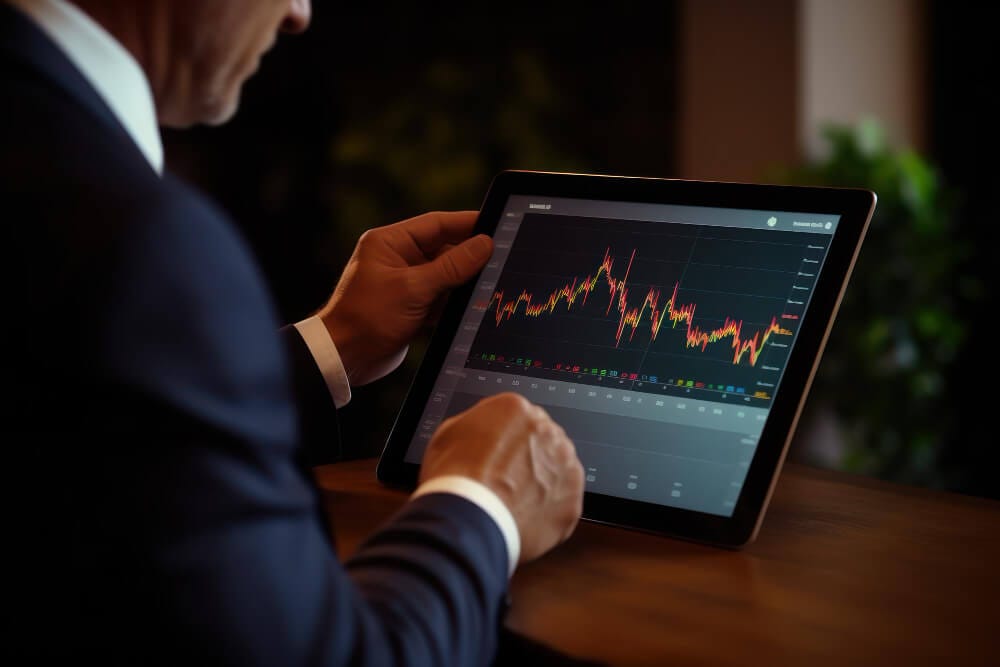Ever wondered why the value of a currency can change so dramatically from one day to the next? Welcome to the world of forex market fluctuation. This phenomenon can be both a trader’s best friend and worst enemy. Understanding the intricacies of these fluctuations can make or break your trading journey. So, let’s dive deep into the factors that cause these changes, how they impact trading, and strategies to navigate this ever-changing market.
What is Forex Market Fluctuation?
Forex market fluctuation refers to the constant changes in currency exchange rates. These fluctuations can happen by the second, influenced by various economic, political, and market-specific factors. Traders buy and sell currencies hoping to profit from these changes.
Why Do Currency Values Fluctuate?
The value of a currency is influenced by numerous factors, including:
- Economic Indicators: Reports on GDP, unemployment rates, and inflation can significantly impact currency values.
- Political Events: Elections, policy changes, and political instability can cause sudden shifts.
- Market Sentiment: Traders’ perceptions and speculations can drive market moves.
- Supply and Demand: Like any market, the forex market is driven by supply and demand dynamics.
The Role of Economic Indicators
Economic indicators are like the heartbeat of a currency. They provide insights into a country’s economic health, influencing traders’ decisions.
Key Economic Indicators to Watch
- Gross Domestic Product (GDP): Indicates the economic performance of a country.
- Employment Data: Unemployment rates and job creation figures.
- Inflation Rates: Measures the rate at which the general level of prices for goods and services is rising.
- Interest Rates: Central bank interest rate decisions can cause major fluctuations.
How Economic Indicators Affect Forex Market Fluctuation
When a country releases positive economic data, it generally strengthens its currency. Conversely, negative data can weaken it. Traders closely monitor these indicators to predict market movements.
Political Events and Their Impact
Politics and forex are intertwined. A country’s political landscape can greatly influence its currency.
Examples of Political Events Affecting Forex
- Elections: Uncertainty during election periods can cause volatility.
- Policy Changes: New economic policies can either boost or weaken a currency.
- Geopolitical Tensions: Conflicts, trade wars, and sanctions can lead to drastic fluctuations.
Case Study: Brexit
The Brexit referendum in 2016 caused significant fluctuations in the British Pound. The uncertainty surrounding the UK’s exit from the EU led to a volatile forex market, showcasing how political events can impact currency values.
The Influence of Market Sentiment
Market sentiment is the overall attitude of traders towards a particular currency. It’s driven by emotions, news, and speculation.
How to Gauge Market Sentiment
- News Analysis: Keeping up with financial news can provide insights into market sentiment.
- Technical Analysis: Charts and indicators can help predict sentiment-driven moves.
- Social Media: Platforms like Twitter can offer real-time sentiment analysis.
The Role of Speculation
Speculators play a massive role in forex market fluctuation. Their trades, based on predictions rather than fundamentals, can create waves in the market.
Supply and Demand Dynamics
Just like any other market, forex is driven by supply and demand. When demand for a currency is high, its value increases. Conversely, when supply exceeds demand, the currency’s value drops.
Factors Influencing Supply and Demand
- Exports and Imports: Countries that export more than they import will see higher demand for their currency.
- Foreign Investment: High levels of foreign investment can increase demand for a currency.
- Central Bank Actions: Central banks can influence supply by printing more money or buying/selling currencies.
Strategies to Navigate Forex Market Fluctuation
Navigating the forex market’s ups and downs requires strategy, patience, and a keen understanding of market dynamics.
Risk Management
- Set Stop-Loss Orders: Protect your investments by setting stop-loss orders to limit potential losses.
- Diversify Your Portfolio: Don’t put all your eggs in one basket. Spread your investments across different currencies.
- Use Leverage Wisely: Leverage can amplify gains but also losses. Use it cautiously.
Technical and Fundamental Analysis
- Technical Analysis: Use charts, trends, and indicators to predict future movements.
- Fundamental Analysis: Study economic indicators, news, and events to make informed decisions.
Stay Updated
- Financial News: Regularly follow financial news to stay informed about market-moving events.
- Economic Calendars: Use economic calendars to track upcoming data releases and events.
Common Mistakes to Avoid
Even seasoned traders can make mistakes. Here are some common pitfalls to avoid:
Overtrading
Trading too frequently can lead to losses. Stick to your strategy and avoid impulsive decisions.
Ignoring Market Trends
Always consider the overall market trend. Trading against the trend can be risky.
Lack of Preparation
Entering the market without adequate preparation and research can lead to significant losses. Always do your homework.
The Psychological Aspect of Trading
Trading isn’t just about numbers and charts; it’s also about psychology. Your mindset can greatly influence your trading success.
Handling Emotions
- Fear and Greed: These are the two biggest emotions in trading. Learn to control them.
- Patience: Wait for the right opportunities rather than forcing trades.
- Discipline: Stick to your trading plan and avoid impulsive decisions.
Developing a Trading Plan
A well-thought-out trading plan can help you stay focused and disciplined. It should include:
- Goals: Define your trading goals and what you aim to achieve.
- Risk Management: Outline your risk management strategies.
- Entry and Exit Points: Define your criteria for entering and exiting trades.
The Role of Technology in Forex Trading
Technology has revolutionized forex trading, making it more accessible and efficient.
Trading Platforms
- MetaTrader 4 and 5: Popular platforms offering a range of tools and resources.
- cTrader: Another powerful platform known for its user-friendly interface.
- Proprietary Platforms: Many brokers offer their unique platforms tailored to specific needs.
Automated Trading
Automated trading systems, or bots, can execute trades based on predefined criteria, reducing the emotional aspect of trading.
Long-Term vs. Short-Term Trading
Different strategies can be employed based on your trading style and risk tolerance.
Long-Term Trading
- Benefits: Less stress, lower transaction costs, and the potential for significant profits.
- Drawbacks: Requires patience and a larger capital investment.
Short-Term Trading
- Benefits: Quick profits and the excitement of frequent trading.
- Drawbacks: Higher stress levels and the risk of significant losses.
The Importance of Continuous Learning
The forex market is ever-evolving. Continuous learning is essential for staying ahead.
Educational Resources
- Online Courses: Many websites offer comprehensive courses on forex trading.
- Books: Numerous books cover various aspects of forex trading.
- Webinars and Seminars: Live sessions can provide valuable insights and updates.
Practice with Demo Accounts
Before diving into live trading, practice with demo accounts to hone your skills and strategies without risking real money.
Conclusion
The forex market fluctuation is a dynamic and complex phenomenon influenced by a myriad of factors. Understanding these factors and employing the right strategies can help you navigate the volatile waters of forex trading. Remember, patience, discipline, and continuous learning are your best allies in this journey.
FAQs
-
What causes forex market fluctuation? Forex market fluctuation is caused by factors like economic indicators, political events, market sentiment, and supply and demand dynamics.
-
How can I manage risks in forex trading? You can manage risks by setting stop-loss orders, diversifying your portfolio, and using leverage wisely.
-
Why is understanding market sentiment important? Market sentiment reflects traders’ attitudes towards a currency, influencing its value and helping predict market movements.
-
What are some common mistakes to avoid in forex trading? Common mistakes include overtrading, ignoring market trends, and lack of preparation.
-
How can technology assist in forex trading? Technology offers advanced trading platforms, automated trading systems, and access to real-time data, enhancing trading efficiency and decision-making.











